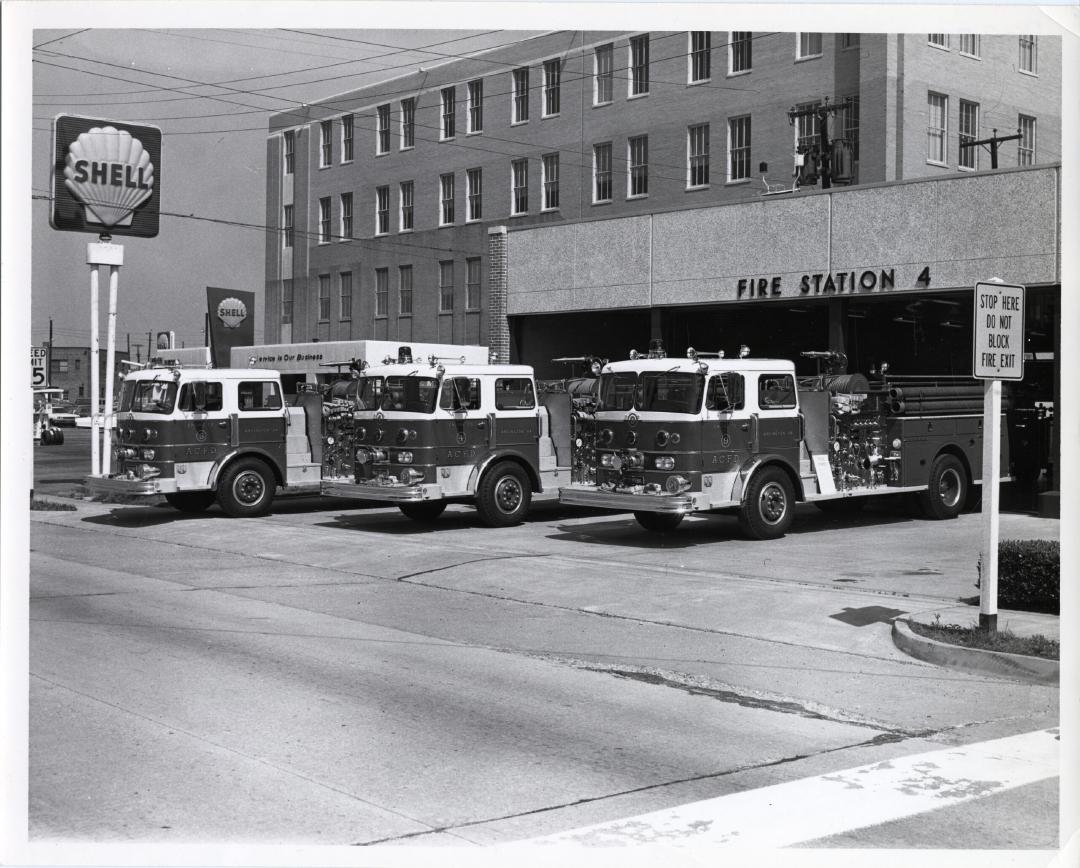Fire Battalion Chief Judith Brewer: Arlington's First Female Fire Fighter

Judith Brewer, then Judith Livers, was hired in 1974 at Clarendon Station #4, serving 15 years before retiring as one of the first female battalion chiefs in the country.
Arlington is believed to be home to the first full-time career female firefighter in the United States. Judith Brewer, then Judith Livers, was hired in 1974 at Clarendon Station #4, serving 15 years before retiring as one of the first female battalion chiefs in the country.
After working briefly as a beautician, Brewer became interested in firefighting while helping her then-husband study for his fire science degree. She was particularly moved by images of children who were injured in fires.
Brewer began the qualification course to become an emergency technician to ride in ambulances to assist firefighters. After becoming certified, she taught the 100-hour course to volunteer and professional firemen at Northern Virginia Community College.
She was rejected twice when she applied to her husband’s volunteer unit in Mt. Vernon. “That made me angry. So I said to heck with the volunteers, and I talked to Tom about becoming a professional firefighter” (Washington Star-News 7/28/74)
The process for a woman to become a firefighter was challenging in the 1970s. Women had only been hired as secretaries or to do other clerical duties at firehouses, and many firemen did not believe that a woman could do the job.
Brewer was hired in 1974 at Arlington’s Clarendon Station #4 by Fire Chief Robert Groshon. Although her initial goal was to stay on the rescue squad, she quickly fell in love with firefighting and began training to become a full-time firefighter.
After passing the required book tests, her first challenge was the grueling physical tests. This included climbing a 50-foot ladder, holding a hose steady for 2 minutes while 100 pounds of pressure pumped through it, finding her way through a smoke-filled building blindfolded while wearing all her gear, and moving a 100-pound sandbag 50 times in 10 minutes. Brewer initially failed the physical test, due to needing to meet the time limit moving sandbags. But instead of giving up, she built a training course at home and practiced for three months to retake and pass the physical test.
Despite Brewer having proven herself strong enough to pass both the physical and mental tests required to become a firefighter, men were still resistant to allowing her in the department. One firefighter said, “It is not a woman’s job…physically, a woman cannot handle it. When I took this job, I didn’t think I’d have to work with minorities and women.”
Much of the opposition towards Brewer was based on sexist ideology that was built into the environment. As Sarah Vee Moseley explains in "Women’s Entrance Into the Fire Department: A Theory of Collaboration and Crisis,"
“Brewer’s body was central in her peer’s evaluation of her: her stature frequently appears in archival records. Her fellow firefighters were staunchly opposed to the hiring of women because of this characterization of women as small, weak, and delicate…while firefighters cited her weight and height as reasons to object to her hiring…it came down to gender. This was rigid rhetorical gendering: no matter how well a woman’s body performed, that body was regarded as inferior.”
Even if they held onto their sexist ideology, some men felt that “I just ain’t used to having a female here…but you got to give somebody a chance. If it works out, fine. I’ll give Judy and any other girl who comes on a chance because I think it took a helluva woman to apply for this job.” In 1974, just months after Brewer was hired, 6 women joined the San Diego, California Fire Department, and one woman joined Alexandria, Virginia.
Once Brewer proved herself in the field, she slowly became accepted as part of the culture. In an interview with the Washington Star Journal 3 months after being hired, her Captain Lou Galleno said, “She’s a very determined person. Within a month and a half, she was capable of tilling (controlling the back wheels of the firetruck) fire calls. I took her out six times, and then I broke her loose. If she had come here to make a joke of my job…I wouldn’t have wanted any part of her. But she wanted to be a firefighter.”
According to Brewer, it took 6 months for the men to stop treating her as an oddity and another 2 years before they stopped watching her every move on calls. While Brewer’s hiring was part of a wave of women joining Fire Departments all across the Country, another woman would not be hired in Arlington for 6 years.
In 1988, Brewer was promoted to Captain, finally given her bedroom and bathroom facilities. Two years later, she was promoted to Battalion Chief, one of the few women to hold the position in the country at the time. Brewer held the rank of Battalion Chief until her retirement in 1995 and was in charge of 6 fire stations across Arlington, including Clarendon Station #4, where she got her start.
Images

